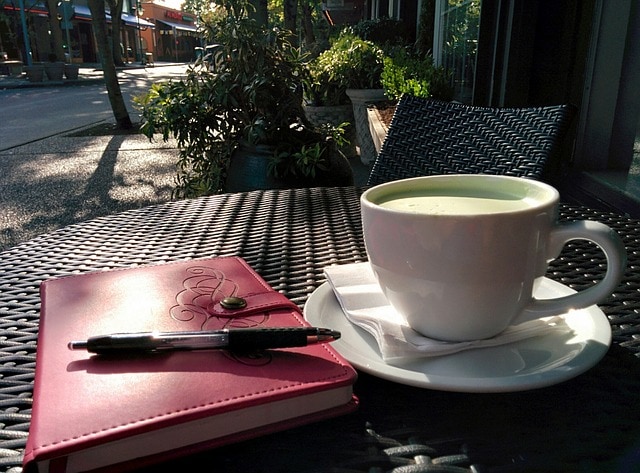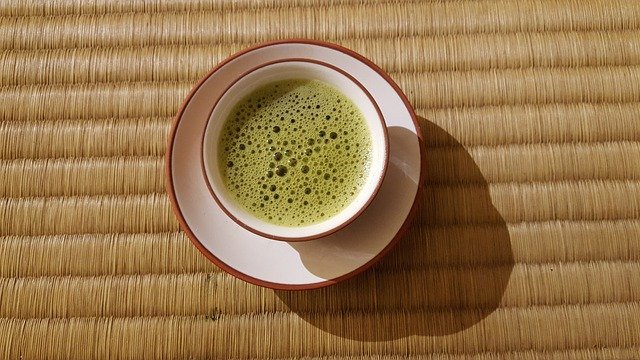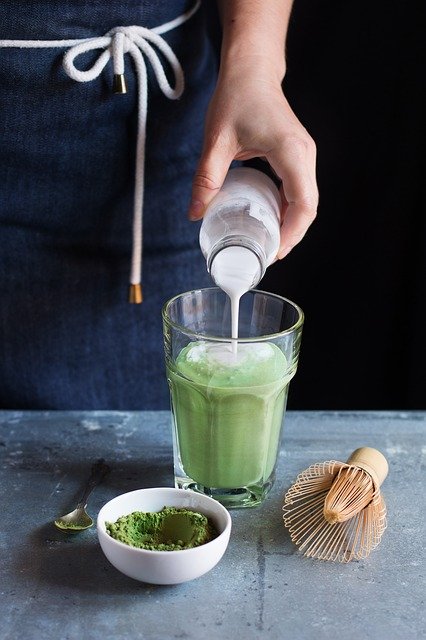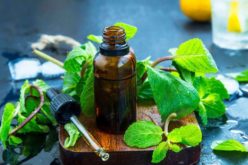With its bright green colour and earthy herbal taste, matcha green tea was once only known to committed health buffs. But over the last few years, thanks to health and fitness influencers and a renaissance in alternative health therapies from the East, matcha tea has now popped up on the menu at your local coffee shop.

What is matcha green tea?
Matcha is a variety of Japanese green tea that is even healthier than the regular green tea that you drink. What makes it different from green tea is the way it is grown, prepared and consumed. In addition to that, it has a higher nutritional value and caffeine content than traditional green tea.
Matcha tea plants are grown in the shade which makes them create more chlorophyll, giving them a vibrant green colour. The leaves are harvested and powdered to make matcha green tea powder. When you brew regular green tea, you steep the leaves in hot water and remove them once the flavour has been infused. With matcha green tea, you are stirring the entire leaf into the tea in powder form. This means you’re getting a bigger dose of those valuable nutrients with matcha.
What are the benefits of drinking matcha green tea?

There are significant matcha benefits that will convince you to make the switch from regular green tea. When compared to other beverages, matcha green tea has one of the highest health quotients. When compared to foods like nuts, berries, spinach and others, the matcha benefits are very high. It is second only after the power-packed goji berry in terms of antioxidant value.
These include:
- Matcha green tea is a powerhouse of nutrients, all easily available in one single serving. With green tea, you would have to drink multiple cups every day to get the same benefits.
- Matcha green tea contains high levels of polyphenols. These are the antioxidants responsible for lowering blood pressure, regulating blood sugar and preventing cancer and heart conditions.
- If you’re drinking green tea to boost your metabolism, you’ll love the matcha benefits of calorie-burning ingredients and increased metabolism.
- If you love the wake-up buzz that your coffee gives you, you’ll be happy to know that matcha green tea has the same amount of caffeine. But it also has L-theanine, a compound that relaxes you but keeps you alert. This means it won’t leave you jittery or prone to a sudden crash in energy like coffee does.
- Matcha green tea can reduce the damage caused by free radicals in your body. Free radicals cause ageing and have also been linked to illnesses like Alzheimer’s, rheumatoid arthritis, some forms of cancer, Parkinson’s and more.
- Matcha green tea keeps your mind alert by improving mood, reducing stress and fighting anxiety. You’ll find yourself more energetic and focused and see other matcha benefits when you begin a regular habit.
What does matcha green tea taste like?
Matcha tea has been described as having a vegetable-like flavour or a herbal flavour. Some people describe it as tasting earthy or ‘green’ or grassy. It is very similar to green tea but with stronger effects due to it being a powdered and concentrated form of the same.
The difference between green tea and matcha green tea is the aftertaste. Matcha is whisked to dissolve the powder into the hot water or milk. This creates a soft creamy aftertaste, making it a more luxurious option than green tea.
How should I choose good matcha green tea?
When buying matcha, remember that there are different grades of tea.
- Ceremonial grade matcha is the best quality but can be expensive. This is good if you plan to drink it in the form of tea or iced tea.
- Culinary-grade matcha has a milder taste and is suitable for adding to bakes, desserts or smoothies.
If the matcha powder looks brown or dirty green, it means it has oxidized or was not grown in the right light conditions. This can make it taste bitter or ashy. Look for good quality matcha that is a fresh bright green and choose your brand carefully.
The right way to prepare matcha tea
You can drink matcha tea as a hot or cold beverage.
To drink it as a hot tea, boil half a cup or 150 ml of water, let it cool, and pour over 1 teaspoon of matcha powder in a cup. Dab at the powder to mix it and then whisk with a wooden matcha whisk or wooden spoon. Whisk firmly until bubbles appear. Continue stirring until the bubbles become a creamy foam.
If you want to drink it like this, you can. If you’re a beginner, you might prefer your matcha with a splash of milk or a sweetener like honey or sugar. You can add these in after the foam has formed.
To drink it as matcha iced tea, prepare the matcha as above with hot water. Add your sugar or honey in and whisk well. Then pour over ice and top with cold milk.

Matcha can be prepared in several consistencies:
- Standard: One teaspoon with two ounces of hot water
- Usucha (thin): Half a teaspoon with three-four ounces of hot water
- Koicha: Two teaspoons with one ounce of hot water
Don’t forget these tips for getting the best out of your matcha:
If you buy large packets of matcha tea, it will lose taste and become stale. Instead, buy smaller amounts so that it is always fresh when you use it.
Don’t pour boiling water on top of your matcha powder or it will burn and become bitter. Let the water cool a little and then use it.
Avoid using metallic mixing tools or cups for your matcha green tea. Traditionally a bamboo whisk is used to stir matcha tea, but a wooden spoon will work too.
How much is too much matcha green tea?
While the many matcha benefits may convince you to drink it all day, certain side effects and risks should be considered.
Matcha tea is highly concentrated and is therefore high in beneficial substances. But depending on where your matcha has been grown and processed, you may end up consuming fluoride, lead, metals or pesticides.
The high levels of plant compounds found in matcha have the potential to cause nausea as well as liver toxicity. Matcha contains six times the amount of plant compounds found in other green teas. It is best to limit consumption and stay on the safe side of your matcha habit.
It is not recommended to drink more than two cups of matcha per day.
In addition to being consumed in the form of tea, you can also use the powder as a food ingredient. Toss it into the mix for cakes, cookies or ice creams. You could even add it to your milkshakes and smoothies to avail the many matcha benefits.

Matcha tea is traditionally a part of Japanese ceremonial events and a regular meditation practice. If you’re reading this because you’re thinking of beginning a meditation habit, Avaana can help you find a meditation guide near you.



